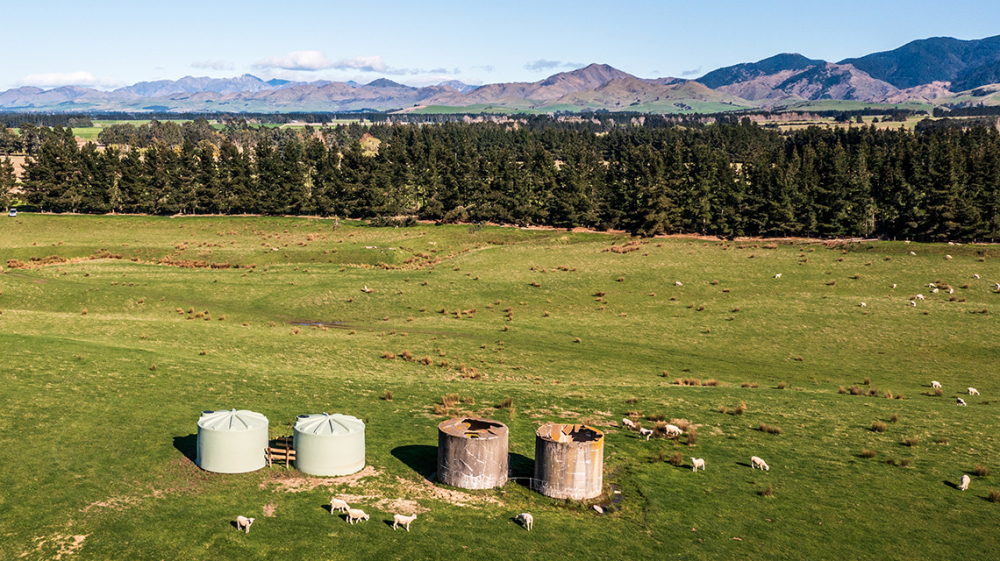Monday, 10 July 2023 Knowledge Articles
The Truth About Concrete Tanks
Is it really the best material for your water storage?
It’s time to reveal some cold, hard facts about using concrete tanks for household water. You might think a concrete tank is the perfect water storage solution for your home, but is that based on misconceptions, myths and misinformation?
To give you the complete picture, let’s take a closer look at concrete tanks, including their reputed affordability, their so-called strength and their alleged ability to keep the water clean and untainted. These “qualities” are built on a shaky foundation and carry no weight. So, let’s look at some of the more common misconceptions and discover why concrete might not be all it is cracked up to be:
- Misconception One
Concrete water tanks are cheap: The price tag might look cheap, but you’ll pay so much more for your concrete tank in the long run. Because of its weight, transport to the site will cost a lot of money, especially if you live in a rural region. Heavy equipment, like an excavator or Hiab, must be hired, with industry experts suggesting installation costs could range between $1,000 and $3,000, depending on location. Burying a concrete tank is costly, while a botched installation could cost you hundreds more in additional materials and labour. And unless you follow the installation guidelines to the letter, the warranty becomes void. In most cases, a warranty does not cover damage caused after delivery resulting from inadequate site preparation, or tanks that are not placed directly onto a prepared tank site at the time of delivery, or damage caused during transportation or installation – and they’re just a few of the warranty conditions!
- Misconception Two
Concrete water tanks are strong: It’s widely believed that concrete tanks are strong and durable. Try telling this couple who had their concrete tank filled with water only to lose all 22, 000 litres through an unseen crack in just two days. What happened to them is not unusual; cracking in concrete tanks is common because they’re very rigid structures with no flexibility. Cracks can occur during the loading or unloading of the tank, if the ground moves when the tank is empty or, as was the case with our unfortunate couple, under the weight of a sudden dump of water from a water delivery transporter in dry weather.
- Misconception Three
Concrete water tanks keep water pure: Concrete is full of lime. If you install a concrete water tank, you can also expect a tank full of lime. When lime leaches into the water, it enters your home’s plumbing system and damages tapware and other hardware. The expense of replacing these things, as well as filters, adds another cost you might not have thought of when you first saw that misleading price tag.
Lime in the water is just one of your concerns regarding water quality. E. coli and other bacteria are also something to worry about, and that is linked to our next fallacy about concrete water tanks.
- Misconception Four
Concrete water tanks are easy to clean: Anyone who tells you that concrete tanks are easy to clean is telling you a dirty lie. Concrete is a porous material, and because of this, it is a difficult surface to maintain and keep clean. This type of surface gives algae, E. coli and other microscopic bacteria plenty of cavernous spaces to hide away; they’ll eventually build up and contaminate the water in the tank.
These are just a few of the misconceptions about concrete water tanks. As polyethylene tank manufacturers, you might accuse us of giving you a highly biased view. But we believe poly water tanks offer so many more advantages than concrete tanks that comparing them is a one-sided argument.
Let’s start with the cost. The supply and installation costs for poly tanks can be less than half of those for concrete tanks. The lighter weight of a poly tank makes it far easier and cheaper to transport and install – a poly tank can be lifted, rolled and handled by lighter equipment than you’ll need for a concrete tank.
Poly tanks are stronger and more flexible than concrete tanks and better able to handle loading, installation, ground movement, and filling without cracking. They’re non-porous too, so unlike concrete, they’re easier to clean and maintain, and water quality and safety are enhanced. Algae, E. coli and other bacteria are much less of a threat in a poly tank than in a concrete one, and we’ll happily drink to that.
Understandably, you’ll want to consider all materials when you’re in the market for a tank. With a few cold, hard facts to guide you, you might see that some materials are better than others at providing reliable and safe household water storage.

